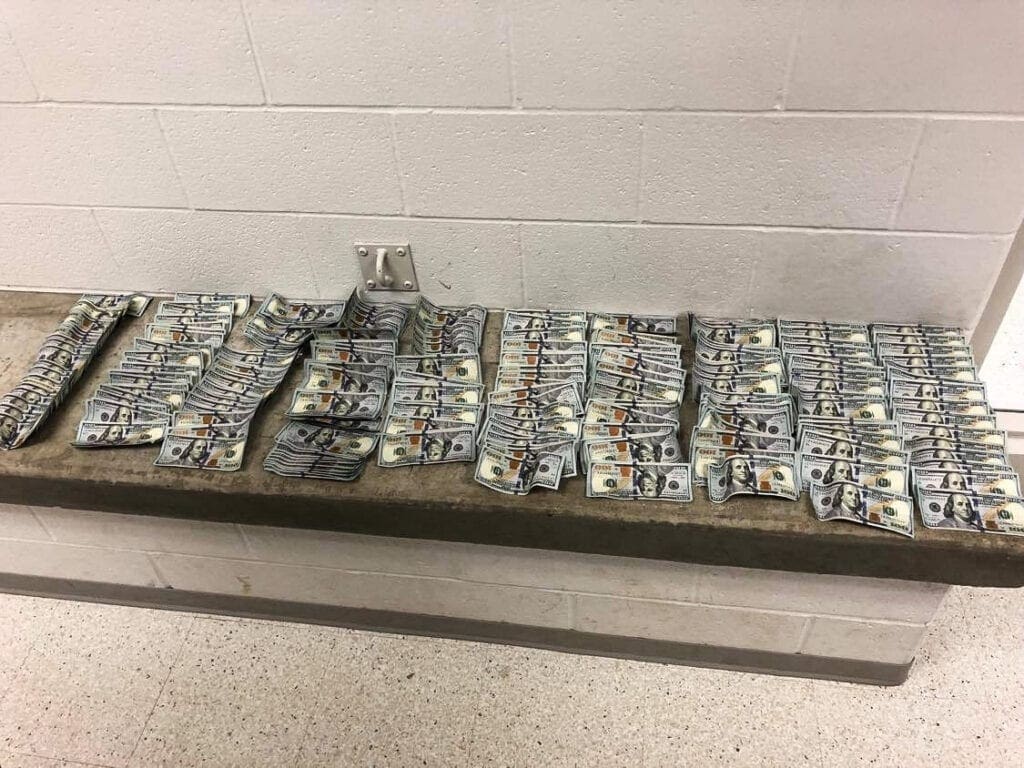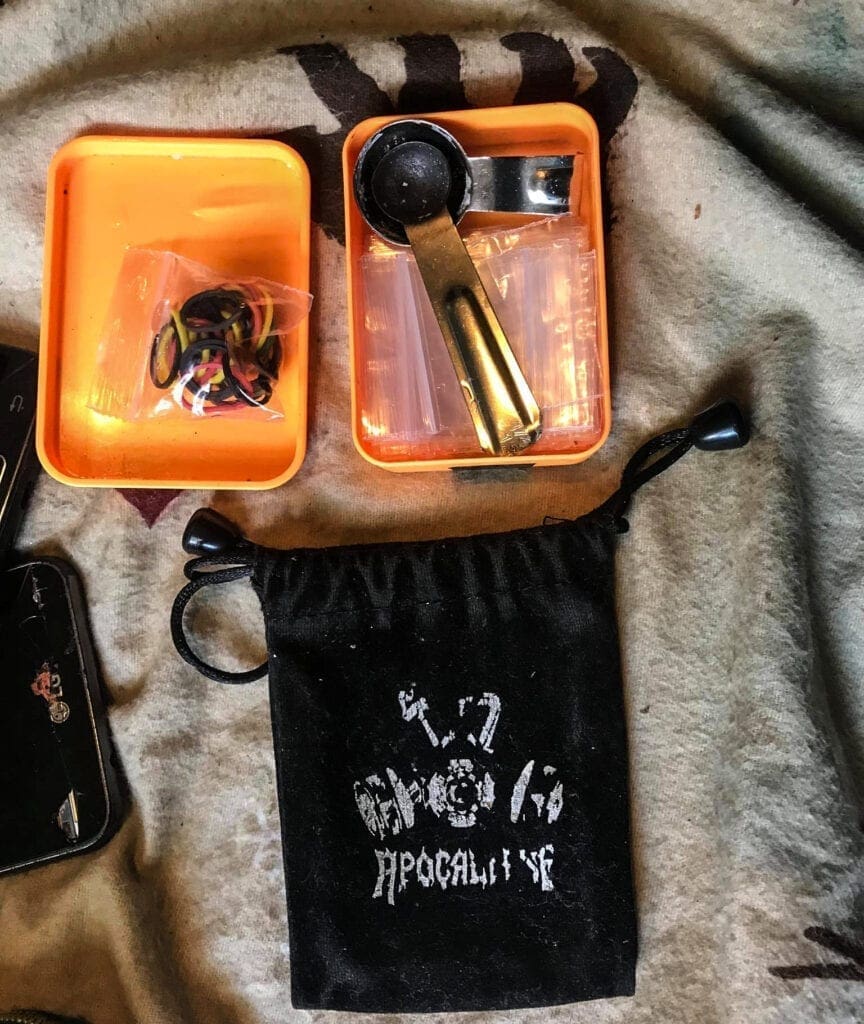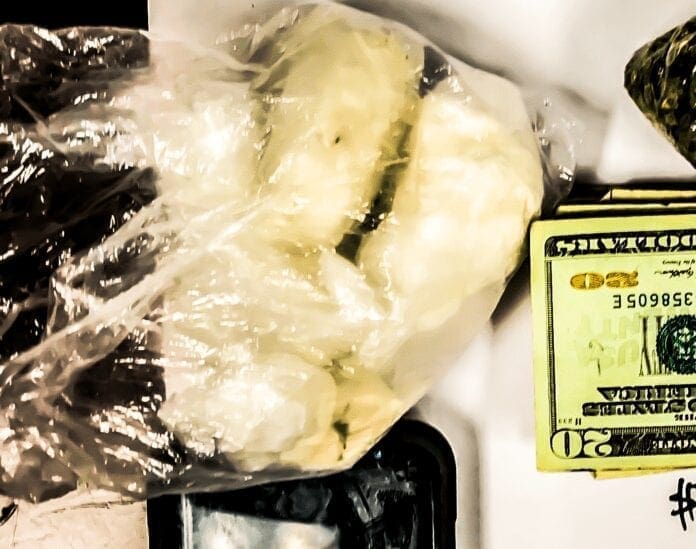Their eyes are always open. Their vehicles aren’t shiny, and they aren’t marked.
The members of the Marshall County Drug Task Force don’t wear watches either because time doesn’t matter to a drug dealer.
And yes, those out-of-town dealers often travel to the Upper Ohio Valley because, as Marshall County Chief Deputy Bill Helms phrases it, “They believe it’s easy pickings in this area and a better profit margin.” When they arrive, often they collect local residents to form a network of distribution, and that means when arrests take place, the names often are familiar.
But that’s only if media outlets have access to the information.
“And that’s not always the case,” Helms explained. “That’s because the investigators with the Marshall County Drug Task Force believe there could be more connections that they can follow to make even more arrests of the people up that trafficking ladder.
“If some guy comes into Marshall County from, say Columbus, and his vehicle is full of drugs, he had to get those drugs from a source,” he continued. “Well, our guys want that source because they want to follow it all the way to the top. They want to end it completely.”

A County Concentration
No one will ever see or read their names reported by the media outlets here in the Upper Ohio Valley, and that is because of the anonymity needed in order to perform their duties. There are normally seven individuals on the task force, including three sheriff’s deputies, an officer with the Moundsville Police Department, at least two state troopers, and a federal agent with the Drug Enforcement Administration.
“But if we need more, there are many deputies who are always willing to step forward to do what they can,” Helms said. “So, if there is a case that needs more investigators, it’s never an issue.
“If you choose law enforcement as your career, that means you want to prevent crime, and if a crime takes place, you want to apprehend the people responsible for that crime. It’s sound pretty simple, of course, but it’s not always an easy task in some cases.”
When John Gruzinksas was sheriff from 2004-2012, he decided Marshall County needed its own task force to tackle issues involving cocaine, crack, and marijuana. That’s why Gruzinksas, a former state trooper and a current member of the Marshall County Commission, decided his deputies would exit the Ohio Valley Drug Task Force.
“That was accomplished because of some forward thinking by our former sheriff John Gruzinksas,” Helms explained. “Our sheriff now, Kevin Cecil, was his chief deputy at the time when the decision was made to form a drug task force for Marshall County. We had participated in the Ohio Valley Drug Task Force, and they did a great job for the citizens of Marshall County for a lot of years, but John saw something coming.
“He recognized the need at that time, and that need has never gone away, unfortunately,” he continued. “When our task force was developed, most of the need for enforcement was in Ohio County, but that left Marshall County open for the most part, and the dealers took advantage of the fact that we are located along the Ohio River, too, with a lot of ways in and out of our county.”

Busted
The last time anyone has heard about the work of the Marshall County Task Force was two years ago when its involvement helped lead to arrests that made national news.
The case involved a gang out of Columbus, Ohio, whose members amassed a dealing ring that spanned four states near the east coast, including West Virginia and specifically Marshall County.
“We’ve had great success with our task force since it all came together, and that means we’ve taken a lot of drugs off our streets in the county,” Helms reported. “And that means the winners, in the end, are the residents of the county and people who are coming into the county for whatever reasons. The work of the task force allows everyone to be confident that they are safe from the people who are trafficking the drugs in this area.
“We want to arrest every single person who is bringing the poison into our county,” he insisted. “Is that possible? Of course not, but I can tell you that is the goal every single day they report for work. Their eyes are always open, and they are always watching, and the vast majority of the time, no one even knows they are there. That’s the best part.”
Once Marshall County was designated as a “High Intensity Drug Trafficking Area,” an additional partnership was formed with the U.S. Attorney’s Office in the Northern District.
“Since we have that designation from the federal government, there’s been an infusion of funds that helps the task force, but the charges and penalties are ehanced, too, and that means the dealers are aware of that. It’s our hope that they stay away from the panhandle area because it is all designated the same.
“The designation also creates something of a border for the drug dealers, and we have had some folks who have gotten busted and told us that they knew better than to come into Marshall County,” he explained. “If one dealer knows about that designation, then that means they all know about it, too, and we believe that keeps a lot of that poison out of the county in the very beginning.”

On the Streets
Cocaine, Helms confirmed, still is in demand in the Upper Ohio Valley, and crack is too, but busting the pot dealer has taken somewhat of a back seat to the distribution of opiates, heroin, and methamphetamine.
“Those are drugs that we have seen kill people,” Helms said. “Things have changed a lot over the years concerning marijuana, and I think that’s because people have realized there are much larger problems right now with what is being sold throughout the county. We have seen far too many overdoses in this valley.
“That’s why one of the things the members of our drug task force do is constantly work intelligence,” the chief deputy said. “It can come from all types of sources whether it’s social media or it’s information they obtain through their contacts around the county, and they collect that information because, when they stop a vehicle in the county, they already know that the dope is in that vehicle.”
When a raid takes place, yes, this team can be seen, but thanks to their tactical gear, one cannot distinguish a man from a woman.
“When those raids take place, it’s not just luck, and that’s because they know what they are doing,” Helms said. “We had one guy that they busted for bringing cocaine into the county who just kept saying, ‘Man, I know I shouldn’t have come into Marshall County. I just knew it.’ All we could say to him at that point was that he was right.
“Those guys, for the most part, are invisible, and that’s not because they only work during the nighttime. They work whenever they have to based on the information they’ve collected. If they know drugs are being delivered in the early morning, then that’s when they are working. If it’s at 2 a.m., then they are working at 2 a.m.,” he added. “That job is not, in any way, a 9-to-5 position because drug dealing isn’t.”


